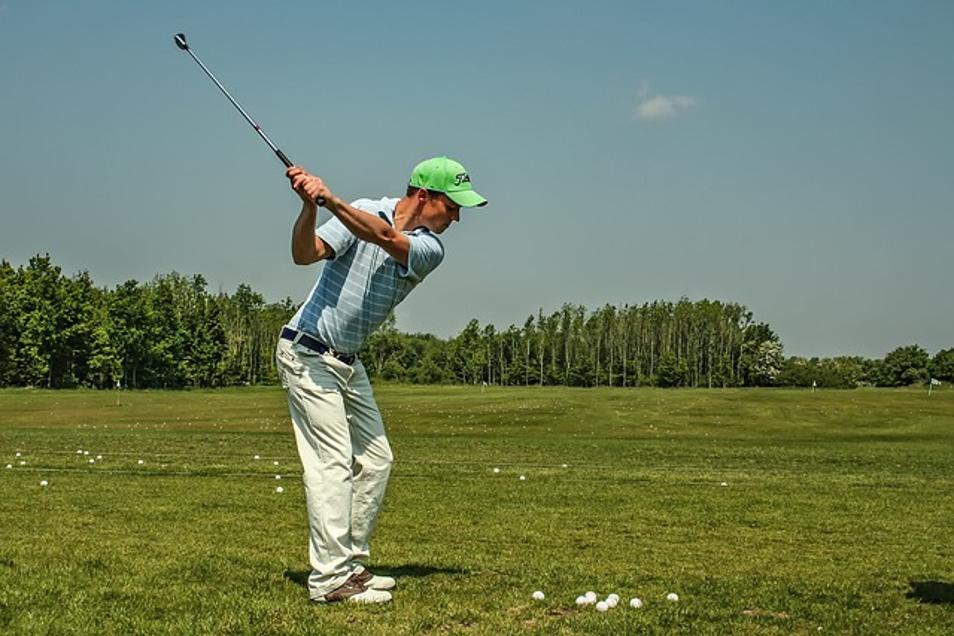Introduction
Swaying can be a common issue for many golfers, affecting both beginners and seasoned players. It is a lateral movement during the swing that results in a loss of balance and accuracy. Understanding how to stop swaying in your golf swing can significantly enhance your game, making it more consistent and powerful.
This blog will provide you with easy-to-follow techniques and exercises aimed at eliminating swaying. You’ll learn about adjusting your stance and posture, integrating specific drill exercises, and building strength and flexibility for improved stability. We’ll also explore the role of mental focus and provide answers to frequently asked questions.

Understanding Swaying in Golf
Swaying in golf refers to the unnecessary lateral motion that occurs during your swing. This side-to-side movement disrupts your balance and can make it difficult to maintain a proper swing path. The main problem with swaying is the inconsistency it introduces to your shots, making it challenging to achieve desired results consistently.
To effectively stop swaying, it’s crucial to understand what causes it. Factors such as incorrect posture, poor balance, lack of core strength, and improper weight distribution often contribute to this issue. Recognizing these elements is the first step toward improving your golf swing and overall performance.
Analyzing Your Swing
Before you can stop swaying, you need to analyze your current swing to identify the problem areas. Video analysis can be an excellent tool for this. Have someone record your swing from multiple angles so you can see the lateral movement in action. Pay attention to how much your body shifts sideways during the backswing and forward swing.
Another effective method is to practice in front of a mirror. This helps you become more aware of your body’s movements. Look out for consistent swaying, and note the points in your swing where your balance seems to falter. Identifying these patterns will make it easier to target specific issues with drills and exercises.

Techniques to Eliminate Swaying
Stance and Posture Adjustments
- Stable Foot Position: Ensure that your feet are shoulder-width apart to provide a solid foundation.
- Knee Flex: Slightly bend your knees to enhance stability.
- Hip Alignment: Keep your hips level and avoid excessive hip rotation.
- Upper Body Position: Maintain a slight tilt from the hips, keeping your back straight.
Drill Exercises to Improve Balance
- Feet-Together Drill: Practice your swing while standing with your feet together. This drill enhances your balance and shifts the focus to your core for stability.
- Pause and Check Drill: During practice swings, pause at the top of your backswing and check your position. Ensuring minimal lateral movement in this position can aid in reducing swaying.
- Alignment Stick Drill: Place an alignment stick or club along your lead side as you practice. The stick should touch your hip at setup and stay close as you swing, preventing excessive lateral movement.

Strength and Flexibility for Stability
Core Strengthening Exercises
- Planks: Hold a plank position for 30 seconds to a minute, focusing on keeping your core tight.
- Russian Twists: Sit on the ground with your knees bent and feet off the floor. Twist your torso side to side, touching the ground with your hands.
- Leg Raises: Lie on your back and slowly lift your legs to a 90-degree angle, then lower them back down without touching the floor.
Balance Improvement Exercises
- Single-Leg Stands: Stand on one leg for up to a minute, then switch. This boosts your balance and ankle strength.
- Bosu Ball Exercises: Perform exercises like squats and lunges on a Bosu ball to challenge your balance and build strength.
- Medicine Ball Pass: Stand on one leg while passing a medicine ball back and forth with a partner or against a wall.
Mental Focus and Consistency
Achieving a stable golf swing also requires mental discipline and consistent practice. Visualize a successful shot, focusing on keeping your body still and maintaining balance. Develop a pre-shot routine that allows you to concentrate on these aspects before each swing. Consistency in practice is key; set aside regular time to work on the drills and exercises mentioned above.
Conclusion
Stopping swaying in your golf swing is essential for developing a consistent and powerful game. By making adjustments to your stance and posture, and incorporating specific drills and exercises, you can significantly improve your balance and stability. Focus on core strengthening and enhancing flexibility for long-term benefits. Pair these physical improvements with mental focus strategies to ensure consistency.
Frequently Asked Questions
What are some common causes of swaying in a golf swing?
Common causes include poor stance and posture, lack of core strength, improper weight distribution, and inadequate balance.
How often should I practice drills to stop swaying?
You should aim to practice drills several times a week. Regular practice helps reinforce muscle memory and stability.
Can physical fitness really help in stopping swaying in my golf swing?
Yes, physical fitness plays a crucial role. Strengthening your core and improving flexibility can significantly reduce swaying and enhance overall stability.
